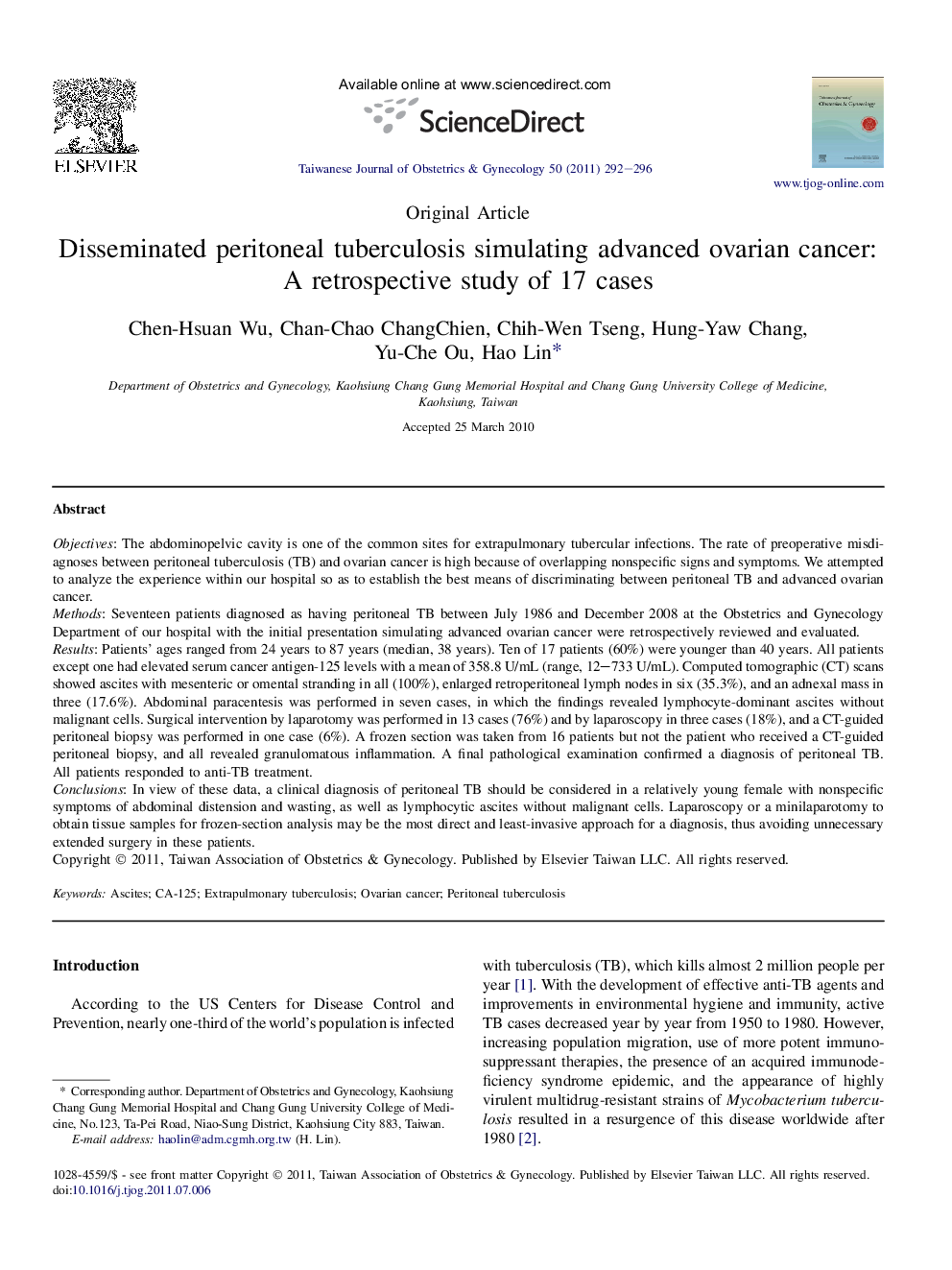| Article ID | Journal | Published Year | Pages | File Type |
|---|---|---|---|---|
| 3975754 | Taiwanese Journal of Obstetrics and Gynecology | 2011 | 5 Pages |
ObjectivesThe abdominopelvic cavity is one of the common sites for extrapulmonary tubercular infections. The rate of preoperative misdiagnoses between peritoneal tuberculosis (TB) and ovarian cancer is high because of overlapping nonspecific signs and symptoms. We attempted to analyze the experience within our hospital so as to establish the best means of discriminating between peritoneal TB and advanced ovarian cancer.MethodsSeventeen patients diagnosed as having peritoneal TB between July 1986 and December 2008 at the Obstetrics and Gynecology Department of our hospital with the initial presentation simulating advanced ovarian cancer were retrospectively reviewed and evaluated.ResultsPatients’ ages ranged from 24 years to 87 years (median, 38 years). Ten of 17 patients (60%) were younger than 40 years. All patients except one had elevated serum cancer antigen-125 levels with a mean of 358.8 U/mL (range, 12–733 U/mL). Computed tomographic (CT) scans showed ascites with mesenteric or omental stranding in all (100%), enlarged retroperitoneal lymph nodes in six (35.3%), and an adnexal mass in three (17.6%). Abdominal paracentesis was performed in seven cases, in which the findings revealed lymphocyte-dominant ascites without malignant cells. Surgical intervention by laparotomy was performed in 13 cases (76%) and by laparoscopy in three cases (18%), and a CT-guided peritoneal biopsy was performed in one case (6%). A frozen section was taken from 16 patients but not the patient who received a CT-guided peritoneal biopsy, and all revealed granulomatous inflammation. A final pathological examination confirmed a diagnosis of peritoneal TB. All patients responded to anti-TB treatment.ConclusionsIn view of these data, a clinical diagnosis of peritoneal TB should be considered in a relatively young female with nonspecific symptoms of abdominal distension and wasting, as well as lymphocytic ascites without malignant cells. Laparoscopy or a minilaparotomy to obtain tissue samples for frozen-section analysis may be the most direct and least-invasive approach for a diagnosis, thus avoiding unnecessary extended surgery in these patients.
